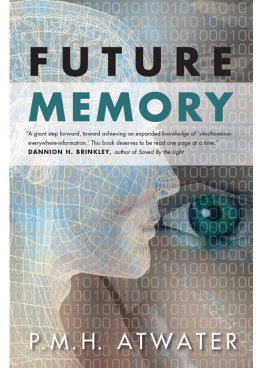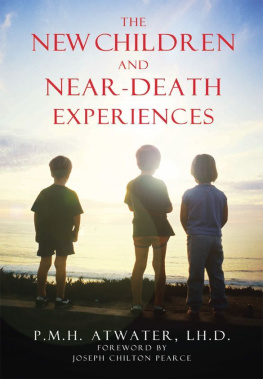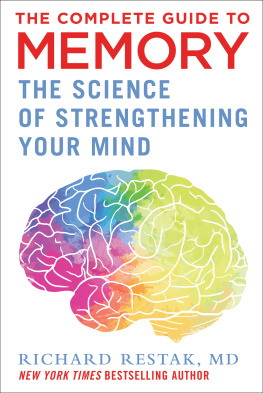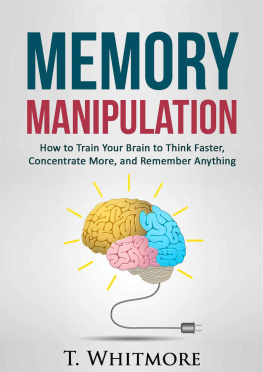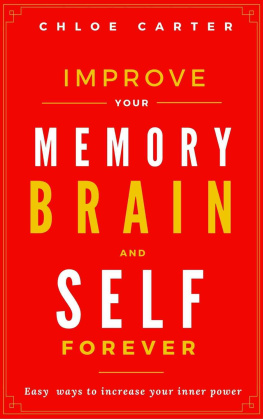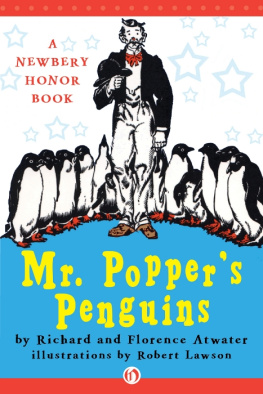Praise for Future Memory
This knowing and this perceiving, which is outside of space-time, is nonlocal and all pervading. It opens the door to an interconnection of all life. Future Memory is a most intriguing book. Thousands of people have now had important glimpses of higher states of consciousness through neardeath experiences (NDEs), and Atwater is one of the investigators of these. The ideas she has put together from her own and others' experiences here will help a lot of people make more sense of profound human experiences.
Charles T. Tart, Ph.D., author of Altered States of Consciousness and Transpersonal Psychologies
This is a book appropriate for the type of consciousness exploration we are involved in today. As we continue to be receptive to and involved in the unfoldment of quantum physics, we see more clearly that consciousness is the foundation of what we know and perceive.
International Association for Near-Death Studies' Vital Signs magazine
Future Memory is a very interesting book. Brilliantly written, east to read (even for me), with tons of scholarly information, scientific wisdom, and spiritual cluesabout timeless time, dimensionless space, and boundless mind. Every chapter is worth reading.
Tulku Thondup Rinpoche, author of Hidden Teachings of Tibet
Atwater has taken a major step past her earlier work, Beyond the Light, rather laying challenge upon challenge to our mind and spirit. May she be heard far and wide.
Joseph Chilton Pearce, author of The Crack in the Cosmic Egg and Magical Child
As well researched as it is provocative, this book questions the very nature of time, memory, and the scope of human consciousness. Future Memory is unlike any other book you will ever read.
Alfred Dolezal
Books by the Author
As You Die (narrative on CD or DVD)
Beyond the Indigo Children: The New Children and the Coming of The Fifth World
Beyond the Light: What Isn't Being Said about the Near-Death Experience
The Big Book of Near-Death Experiences
Children of the Fifth World: A Guide to the Coming Changes in Human Consciousness
Children of the New Millennium
Coming Back to Life
The Complete Idiot's Guide to Near-Death Experiences
Goddess Runes
I Died Three Times in 1977 The Complete Story
The Magical Language of Runes
Near-Death Experiences: The Rest of the Story
The New Children and Near-Death Experiences
The Runes of the Goddess (book and kit)
We Live Forever: The Real Truth about Death
E-Books: Life Sounds
The Frost Diamond
The Challenge of September 11
I Died Three Times in 1977 (original four articles)
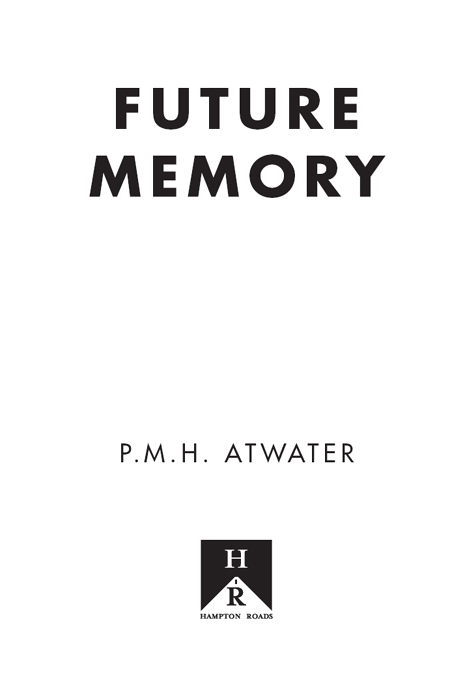
Copyright 1999, 2013
By P.M.H. Atwater
All rights reserved. No part of this publication may be reproduced or transmitted in any form or by any means, electronic or mechanical, including photocopying, recording, or by any information storage and retrieval system, without permission in writing from Hampton Roads Publishing, Inc. Reviewers may quote brief passages. Originally published by Hampton Roads Publishing in 1999, ISBN: 978-1-57174-135-6
Cover design by Jim Warner
Cover art by Ocean/Corbis
Interior designed by Frame25 Productions
Hampton Roads Publishing Company, Inc.
Charlottesville, VA 22906
Distributed by Red Wheel/Weiser, LLC
www.redwheelweiser.com
Sign up for our newsletter and special offers by going to www.redwheelweiser.com/newsletter/.
ISBN: 978-1-57174-688-7
Library of Congress Cataloging-in-Publication Data available upon request.
Printed on acid-free paper in the United States of America
TS
10 9 8 7 6 5 4 3 2 1
www.redwheelweiser.com
www.redwheelweiser.com/newsletter
Dedication
This book is lovingly dedicated to the three special people whom I was privileged to bring forth in birth:
Kelly John Huffmana child of the oceans with a heart of music who seeks to learn harmony from life.
Natalie Gae Huffmana child of fire with the heart of a gypsy who seeks to learn courage from life.
Pauline Ann Huffmana child of night with the heart of a rosebud who seeks to learn wisdom from life.
Contents
Acknowledgments
The book you are about to read constitutes the most extensive research project I have ever conducted. Because of this, many people have been directly or indirectly involved in its making. Those who contributed the most are listed below, yet there are thousands more. To each and every one of them, I offer my sincerest and deepest thanks!
Terry Young Atwater
David Morgan
Vic Bertrand
Dennis Swartz
Stephany Evans
Steve Sommerfeld
Liz St. Clair
Peter R. Rothschild
David McKnight
Mirtala
Nic and Estill Tideman
Rita and Noel McInnis
Walter and Mary Jo Uphoff
Patricia Helen Home
Walter Starcke
Machaelle and Clarence Wright
Sun Bear and Wabun Wind
Diane Pike and Arleen Lorrance
Elisabeth Kubler-Ross
Lao Russell
Don and Neddy Repp
Arthur E. Yensen
William G. and Jeanie Reimer
Kenneth Ring
M. Elizabeth Macinata
Terry Macinata
Thomas More Huber (Thomas Shawnodese Wind)
Charles and Lee Wise
Jack Huffman
Johnny Lister
Rev. Paul Neary
Roger Pile
Annie Sargent
Art Samson
Oralee Stiles and Marzenda Stiles McComb
The people at Idaho First National Bank (now West One) and especially Sandi Bonnett Pack, Karen Woods, Kathy Pidjeon, and Janet Atkinson.
Introduction
For anyone glued to the planet's surface by gravity, the expression high is an adjective whose meaning is obvious. Yet, when the forces of gravity are counteracted or become too weak to act on a perceivable mass, the meaning of high topples hopelessly out of context. In free falla state only recently experienced by space-faring humansgravity apparently disappears and the notion of up and down turns into a comfortably user-definable variable.
You see, if we boil all facts down to brass tacks, space does not even exist. For space, as such, is but an auxiliary concept that enables us to relate one object to another. Without space, we could never master chaos. Space is essential for our growth. It seems obvious that if there were absolutely no objectsthingsspace would be totally meaningless.
The same holds true for time, which is another auxiliary concept of paramount importance. Time's purpose is to relate events to one another. Should absolutely no event ever occur, time would be completely void of significance; thus it wouldn't even exist. The fewer the events, the looser the division of time. In biblical times, when during long millennia events unfolded at a rather slow pace, the smallest time segments were represented by thirds of the day: morning, afternoon, and night.
The need for the hour did not arise until the so-called Middle Ages. Minutes were not required until much later, when the pulse of events began to hasten and shorter time segments became a necessity. Seconds appeared at the end of the 1800s. But a few decades ago, when human interference in subatomic events began to require speeds that only supercomputers can handle, the urgent necessity for high-precision time measurements developed.
Shortly, it became evident that the concepts of space and time were hopelessly unmanageable without relating both to one another. So, early in the 1900s, a new breed of hard-core philosophersthe scientistscoalesced these concepts into a bafflingly manifold notion called space/time.

